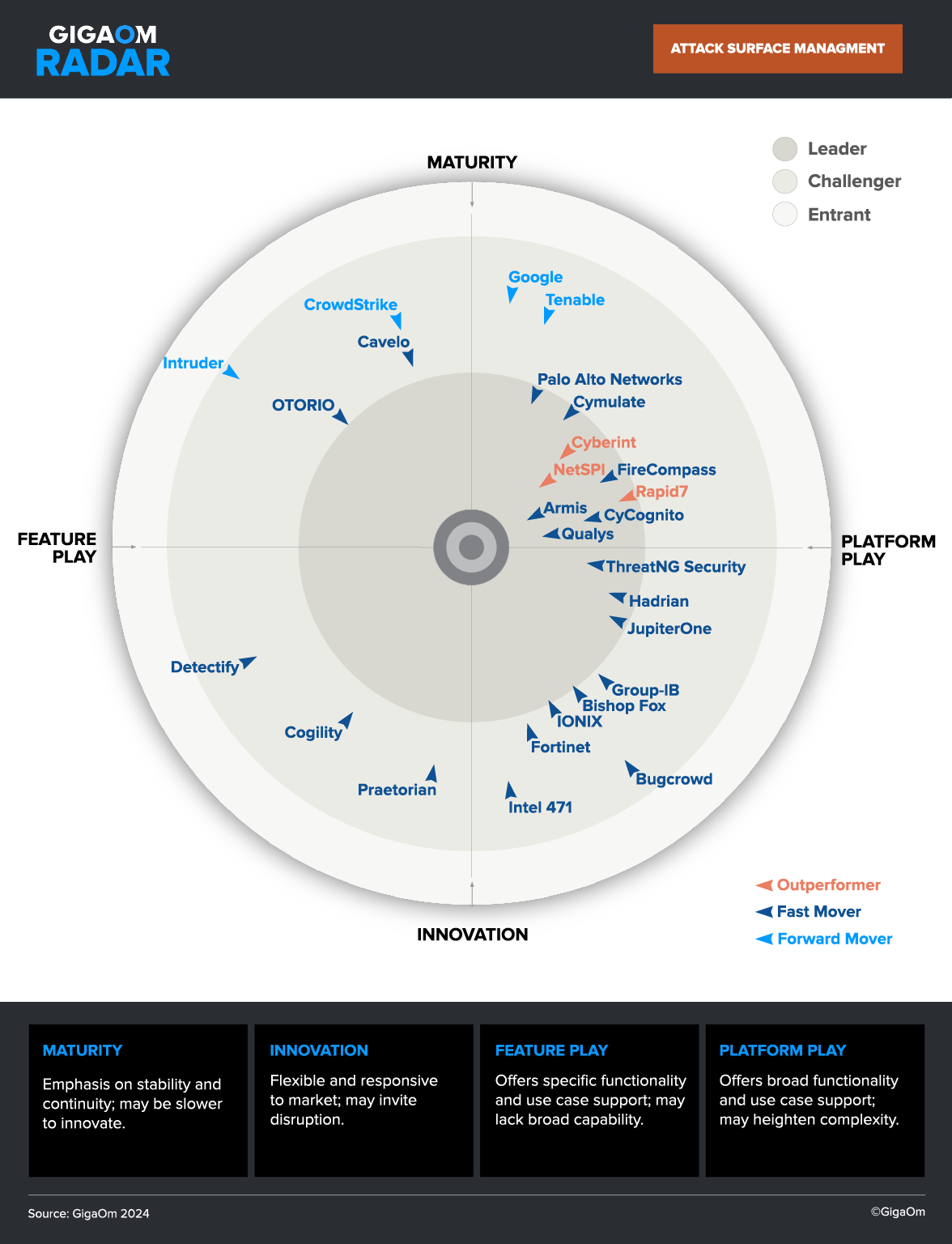6-Step Attack Surface Analysis Process
The process of analyzing an organization’s attack surface typically includes the following steps.
1. Asset Discovery and Inventory
The first step is identifying all assets within an organization's network. This includes both hardware and software assets, such as servers, workstations, network devices, applications, and data repositories. The goal is to create a complete and accurate inventory of everything that needs to be protected, which serves as the foundation for further analysis.
This step often involves the use of automated tools to scan networks for devices and applications, ensuring that even transient or previously unknown assets are accounted for.
2. Threat Modeling
Threat modeling is a structured approach for identifying and prioritizing potential threats to a system. It involves analyzing an organization's assets, the potential adversaries that might target them, and the attack vectors through which they could be compromised.
This step helps in understanding the risks associated with different parts of the attack surface and guides the prioritization of security efforts. Effective threat modeling requires a deep understanding of the organization's business context, the value of different assets, and the latest threat intelligence.
3. Scanning and Assessment
Scanning and assessment are critical for identifying security weaknesses within the attack surface. This step involves the use of automated tools to scan for known vulnerabilities, misconfigurations, and security gaps in hardware, software, and networks.
Assessment might also include penetration testing, where security experts simulate attacks to test the effectiveness of security measures. The results from scanning and assessment activities provide detailed insights into potential security issues that need to be addressed.
4. Prioritization
Prioritization involves ranking vulnerabilities and threats identified during the scanning and assessment phase based on their potential impact and likelihood of exploitation. This step helps organizations focus their resources on addressing the most critical risks first. Factors to consider when prioritizing include the severity of the vulnerability, the value of the affected asset, and the potential consequences of an exploit.
Effective prioritization requires collaboration between security teams, business units, and IT departments to understand the context and impact of each vulnerability. By focusing on high-priority risks, organizations can allocate their resources more efficiently and reduce the overall attack surface more effectively.
5. Remediation
Remediation involves taking action to address the vulnerabilities and weaknesses identified during the scanning and assessment phase. This can include applying patches, configuring security settings, changing network architectures, and implementing new security controls.
Remediation is critical for reducing the attack surface and mitigating risks. It requires coordination across different teams and departments to ensure that vulnerabilities are addressed promptly and effectively without impacting business operations.
6. Monitoring and Reporting
Monitoring and reporting ensure continuous visibility into the attack surface and the effectiveness of security measures. Monitoring involves the use of security information and event management (SIEM) systems, intrusion detection systems (IDS), and other monitoring tools to detect and alert on suspicious activities.
Regular reporting on security incidents, vulnerabilities, and remediation efforts is essential for keeping stakeholders informed and making data-driven decisions about security priorities.
7. Automation and Continuous Validation
Organizations can use technology to streamline the attack surface analysis process and ensure that security controls remain effective over time. Automation can help in regularly scanning for vulnerabilities, managing assets, and enforcing security policies.
Continuous validation involves regularly testing security measures to ensure they are functioning as intended and adapting to new threats. This approach helps organizations stay ahead of attackers by ensuring that their security posture evolves in response to changing threats.
Best Practices for Attack Surface Analysis and Management
Here are some best practices to ensure a thorough and accurate attack surface analysis.
Implement Least Privilege Access Control
Least privilege is a security principle that involves granting users and systems the minimum levels of access—or permissions—needed to perform their functions. This approach significantly reduces the attack surface by limiting the potential for unauthorized access to sensitive information and systems.
To effectively implement least privilege access control, organizations should:
- Conduct a role-based access review: Regularly review and adjust access rights for all users, based on their current roles and responsibilities within the organization. This helps ensure that access privileges align with job requirements and reduces the risk of excessive permissions.
- Use secure administrative accounts: Ensure that administrative accounts are used only for specific administrative tasks and not for everyday work activities. This minimizes the risk of exposing sensitive operations and systems to attack vectors.
- Employ just-in-time access: Implement just-in-time (JIT) access controls to provide temporary access to resources when needed, automatically revoking permissions once the task is completed. This limits the window of opportunity for unauthorized access.
- Monitor and audit access: Continuously monitor and audit access logs to detect and respond to unauthorized attempts or inappropriate access patterns. This helps in identifying potential security issues related to excessive or inappropriate access rights.
Manage Third-Party Risk
Managing risks related to third parties is critical in reducing the attack surface that external entities might introduce to an organization. Vendors, contractors, and partners can all expand an organization's attack surface if their access to systems is not properly managed and monitored.
Effective third-party risk management involves:
- Conducting rigorous vendor assessments: Before engaging with any third party, conduct thorough security assessments to understand and mitigate the risks they may pose. This includes reviewing their security policies, procedures, and compliance with relevant standards.
- Defining clear security requirements: Establish clear security requirements and expectations with all third parties, including requirements for data handling, encryption, and breach notification.
- Regularly reviewing and monitoring third-party access: Continuously monitor the access and activities of third parties within your systems. Regularly review and adjust their access rights based on current needs and potential risks.
- Implementing strong contractual protections: Ensure that contracts with third parties include strong security clauses and requirements for compliance with your organization’s security policies. This should also cover the actions to be taken in the event of a security breach.
Use Threat Intelligence
Threat intelligence involves gathering, analyzing, and applying information about existing and emerging threats to improve security decision-making. By understanding the tactics, techniques, and procedures (TTPs) of attackers, organizations can enhance their ability to detect and prevent attacks.
Key aspects of using threat intelligence effectively include:
- Subscribing to threat intelligence feeds: Stay informed by subscribing to reputable threat intelligence feeds that provide up-to-date information on the latest threats and vulnerabilities.
- Integrating intelligence into security tools: Integrate threat intelligence with security tools such as SIEM systems, firewalls, endpoint protection solutions, and exposure management platforms. This enables automated responses to known threats and enhances overall security posture.
- Sharing information with industry peers: Join security communities and participate in industry-specific information sharing and analysis centers (ISACs) to share and receive threat intelligence with peers.
Utilize Attack Surface Management Tools
Attack surface management tools are useful for continuously discovering, assessing, and securing all known and unknown assets within an organization's environment. These tools automate the process of identifying vulnerabilities and misconfigurations that could be exploited by attackers.
Key benefits of automated tools include:
- Automated discovery and inventory: Automatically discover and maintain an up-to-date inventory of all assets across on-premises, cloud, and hybrid environments. This ensures that no part of the attack surface is overlooked.
- Continuous vulnerability assessment: Perform continuous scans for vulnerabilities and misconfigurations, providing real-time insights into potential security gaps.
- Integration with remediation workflows: Integrate with existing security workflows and systems, enabling quick and efficient remediation of identified vulnerabilities.
- Support for regulatory compliance: Support compliance with relevant regulations and standards by providing detailed reports and insights into the security posture.
Automating Attack Surface Analysis with CyCognito
The CyCognito platform addresses today’s exposure management requirements by taking an automated multi-faceted approach in identifying and remediating critical issues based on their business impact, rather than focusing on the generic severity of the threat alone. To do this you need a platform that is continuously monitoring the attack surface for changes and provides intelligent prioritization that incorporates organizations context.
The CyCognito platform addresses today’s vulnerability management requirements by:
- Maintaining a dynamic asset inventory with classification of the entire external attack surface, including exposed on-premise and cloud-hosted assets like web applications, IP addresses, domains and certificates, eliminating the need to rely on outdated or incomplete information from collaboration tools, spreadsheets, or emails. This approach significantly reduces the burden of tedious, error-prone and costly processes.
- Actively testing all discovered assets to identify risk. Active testing, including dynamic application security testing, or DAST, uncovers complex issues and validates known issues, with low false positives. Each exploited asset is assigned a security grade based on its criticality to the business.
- Prioritizing critical issues, guiding security teams to focus on the most urgent threats. Our unique risk-based prioritization analysis goes beyond the common vulnerability scoring system (CVSS), and incorporates factors like asset discoverability, asset attractiveness, exploitability, business impact and remediation complexity. Integrated tactical threat intelligence identifies the handful of attack vectors that pose the greatest risk.
- Streamlining communications between remediation teams by providing comprehensive, verifiable evidence for each exploited asset. This evidence includes detailed risk assessments, asset ownership information, and actionable remediation guidance. The platform seamlessly integrates with SIEM, SOAR and ticketing system tools like Jira, ServiceNow and Splunk to facilitate information sharing and collaboration.
Learn more about the Cycognito Attack Surface Management Platform.





 Complimentary Report
Complimentary Report